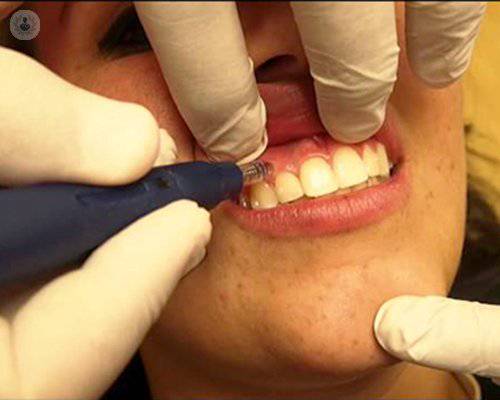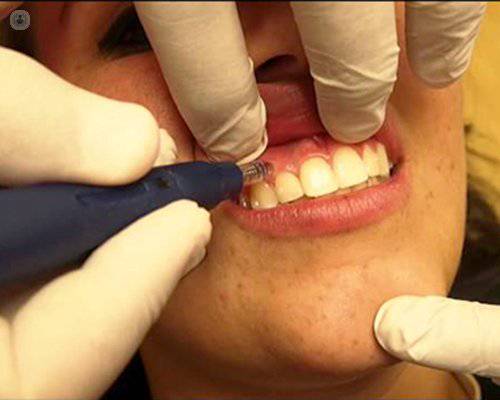
Micro-osteoperforation: a new technique to accelerate orthodontic treatments
When patients have treatment to perfect their smile, one of their biggest worries is how long it will take to fix their smile and many innovations have been introduced to accelerate the time of treatment.

Latest developments in accelerated orthodontics
The latest developments in accelerated orthodontics include improvements in the design of the braces to help a simpler treatment (self-ligating braces) and new treatment protocols with surgical aids, (corticotomies and osteotomies to accelerate orthodontics).
The latest research and innovation has shown that when it comes to accelerating the speed of tooth repositioning, inflammatory biological principles can be activated to accelerate bone remodelling.
What is micro-osteoperforation?
One scientifically proven solution, is a new minimally invasive technique called micro-osteoperforation. This stimulates the activity of cytokines to accelerate the remodelling of the alveolar bone.
Bone remodelling allows greater movement of the teeth. The previous highly invasive technique can be replaced with small, shallow micro-osteoperforations in the alveolar bone without the need for soft tissue flaps, bone grafting or suturing.
Alveocentesis stimulates the alveolar bone when an orthodontic force is applied to the teeth. As a result, the bone is remodelled more efficiently, a process which can reduce the treatment time by 60% or more.
Micro-osteoperforations can be performed by Propel Orthodontics using a new device and can be done in a matter of minutes by an orthodontist in their office. The procedure produces very little discomfort to the patient and the recovery time is minimal.
The procedure is used for 80% of patients receiving orthodontic treatment and can be used in conjunction with any mode of treatment.
Benefits of the micro-osteoperforation technique
As with any medical treatment, the longer the treatment takes, the higher risk there is of infections and other complications. Micro-osteoperforations allow a reduction in this risk, along with other complications associated with long-term orthodontic treatments such as decalcification.
Micro-osteoperforation allows the patient to return to their oral cleaning routine sooner than previously.

